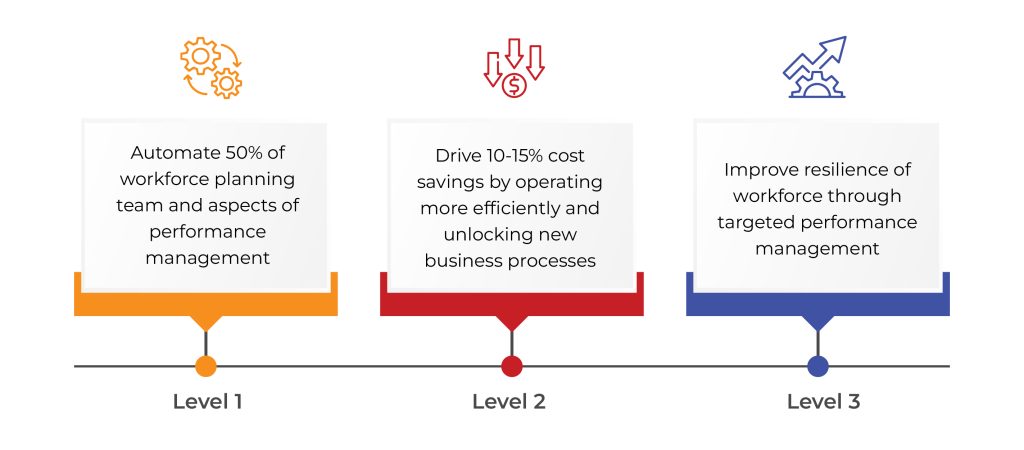Unleashing the Power of Predictive Analytics in Retail: Strategies for Success

In the competitive world of retail, understanding consumer behavior and forecasting trends is not just beneficial; it’s crucial for survival. This is where predictive analytics steps in, transforming raw data into actionable insights that drive strategic decision-making and operational efficiency. AI is projected to expand into a $309 billion industry by 2026, with 44% of executives noting a reduction in operational costs directly attributable to AI implementation. This blog explores how predictive analytics is reshaping the retail industry, detailing its applications, benefits, challenges, and successful implementations.
Understanding Predictive Analytics and Its Relevance in Retail
Predictive analytics employs statistical algorithms and machine learning techniques to identify the likelihood of future outcomes based on historical data. In retail, this translates to leveraging vast amounts of data from sales, customer profiles, inventory levels, and market trends to anticipate consumer needs. The goal is to make smarter decisions about product positioning, marketing strategies, and customer engagement.

The Role of Data Science in Retail
Retail predictive modeling goes beyond traditional business intelligence. It involves sophisticated data science processes where patterns are discerned from complex datasets. This is particularly relevant in today’s retail environment, where data not only includes in-store transactions but also online interactions and social media behaviors, all contributing to a comprehensive view of the consumer psyche.
Key Applications of Predictive Analytics in the Retail Industry
The spectrum of predictive analytics in retail is broad, encompassing several critical operations:
- Retail Forecasting: Accurately predicting demand for specific products helps retailers optimize inventory levels, minimize stockouts and overstocking, and ensure they have the right products available at the right time For instance, according to a study by McKinsey, integrating AI-driven forecasting in supply chain management can decrease errors by 20 to 50 percent. This improvement can lead to a significant reduction in lost sales and product unavailability, potentially dropping by as much as 65 percent.
- Demand Planning: Predictive tools help anticipate product demand, enabling retailers to optimize stock levels and reduce overstock or stockouts.
- Pricing optimization: Predictive analytics can identify price points that maximize customer satisfaction and profitability. Retailers can use this data to tailor pricing strategies for different customer segments, products, and market conditions
- Customer Segmentation: Predictive analytics allows retailers to segment their customer base into distinct groups based on demographics, purchasing behavior, and preferences. This facilitates targeted marketing campaigns, personalized product recommendations, and tailored loyalty programs.
- Inventory Management: Predictive analytics empowers retailers to maintain optimal inventory levels by forecasting demand fluctuations and identifying slow-moving or high-demand products. This reduces the risk of stockouts, minimizes storage costs, and improves overall inventory efficiency.
Leveraging Predictive Analytics to Enhance the Retail Customer Experience
Beyond optimizing internal operations, predictive analytics plays a crucial role in creating a superior customer experience. Here’s how:
- Personalization: Predictive models can analyze customer data to recommend products, promotions, and content that are most relevant to their individual preferences and past purchases. This personalized approach fosters customer satisfaction, loyalty, and increases the likelihood of repeat business.
- Customer churn reduction: Predictive analytics can identify customers at risk of churning (defecting to competitors). By analyzing past customer behavior patterns, retailers can proactively engage with these customers, address their concerns, and offer targeted incentives to retain them.
- Customer lifetime value (CLV) prediction: Predictive analytics can help retailers predict the potential future value of a customer. This allows them to tailor marketing efforts and loyalty programs to high-value customers, maximizing customer lifetime value.
- Customer behavior analysis: Predictive analytics helps retailers understand customer behavior patterns, predict future purchases, and identify emerging trends. This data can be used to optimize store layouts, product placement, and marketing campaigns for maximum impact.
Implementing Predictive Analytics: Challenges and Best Practices
While the benefits of predictive analytics are undeniable, successful implementation requires careful planning and addressing key challenges:
- Clear Objective Setting: Begin with a clear understanding of what you want to achieve.
- Data Integration: Ensure that data across all retail channels is integrated and accessible.
- Data quality and availability: Predictive models rely on high-quality, comprehensive data. Retailers need to ensure data accuracy, consistency, and accessibility for successful analytics initiatives.
- Talent and expertise: Implementing and managing predictive analytics projects requires a team with data science expertise, business acumen, and the ability to translate insights into actionable strategies.
- Organizational change management: Embracing a data-driven culture requires buy-in from all levels of the organization. Retailers need to establish clear communication channels and provide training to ensure successful adoption of predictive analytics across departments.
Case Studies: Successful Retail Businesses Leveraging Predictive Analytics
Several leading retailers have successfully harnessed the power of predictive analytics to achieve remarkable results. For instance, Amazon uses predictive analytics to recommend products to customers, significantly impacting their purchase decisions. Macy’s uses similar techniques to optimize pricing strategies and personalize marketing campaigns, leading to increased customer engagement and revenue growth. These examples showcase the transformative potential of predictive analytics in the retail industry.
predictive analytics is rapidly transforming the retail landscape. By leveraging historical data, customer insights, and sophisticated algorithms, retailers can gain a deeper understanding of their customers, optimize operations, and personalize the shopping experience. This data-driven approach translates to increased sales, improved customer satisfaction, and a significant competitive edge.
However, implementing a successful predictive analytics program requires expertise in data science, model development, and translating insights into actionable strategies. Integra, a leading AI consultancy with proven experience in the retail sector, can empower your business to unlock the true potential of predictive analytics.
Our team of data scientists and industry experts will help you:
- Develop a comprehensive data strategy to ensure data quality, access, and integration for seamless analytics.
- Build robust predictive models tailored to your specific business goals and challenges.
- Translate data insights into actionable recommendations that optimize your pricing, inventory management, and customer engagement strategies.
- Monitor and refine your models over time to ensure they remain effective in a dynamic marketplace.
Integra’s AI consultancy services can help you navigate the complexities of predictive analytics and harness its power to drive significant competitive advantage. Contact us today to discuss how we can help you transform your retail business.
Recent Blogs

Preprints, Transparency, and the Future of Scholarly Publishing: Why Journals Should Lead the Shift

From Disruption to Direction: Finding Focus in a Transforming Industry


